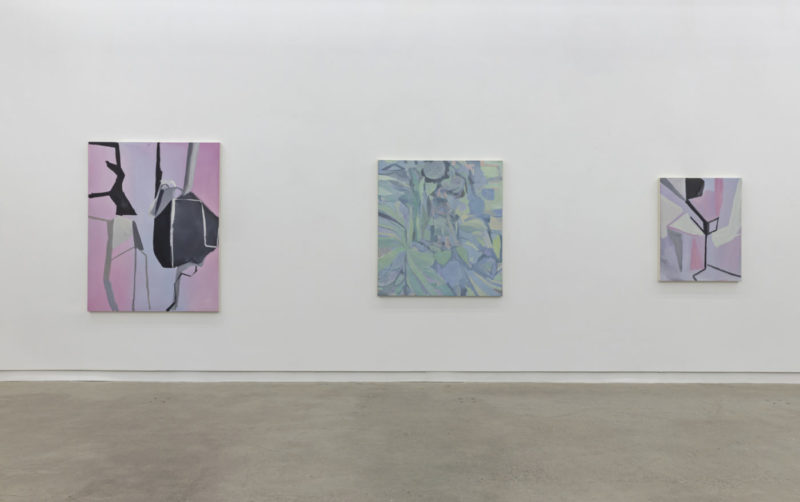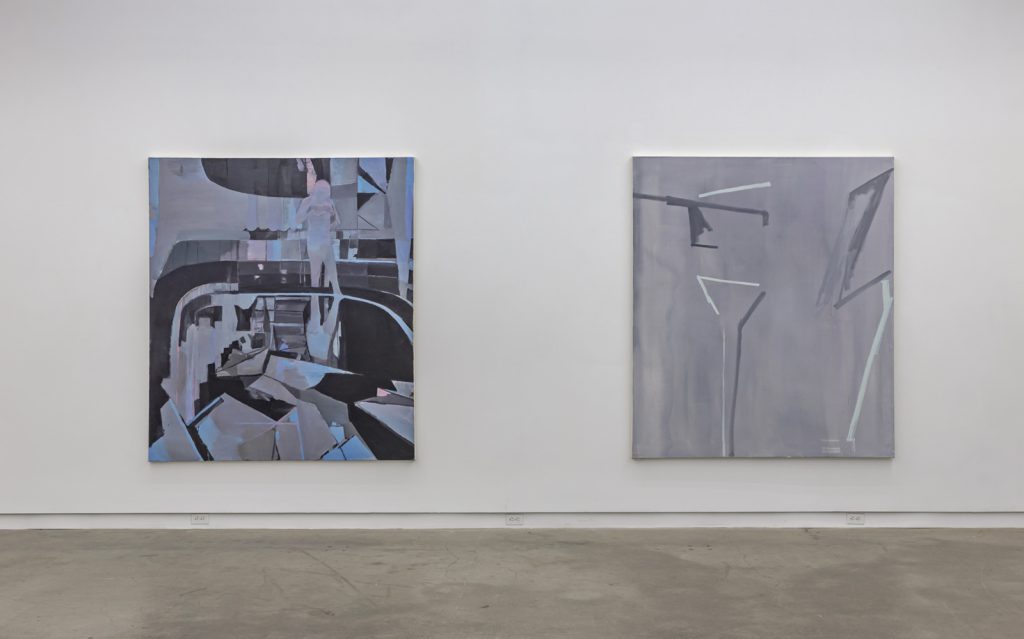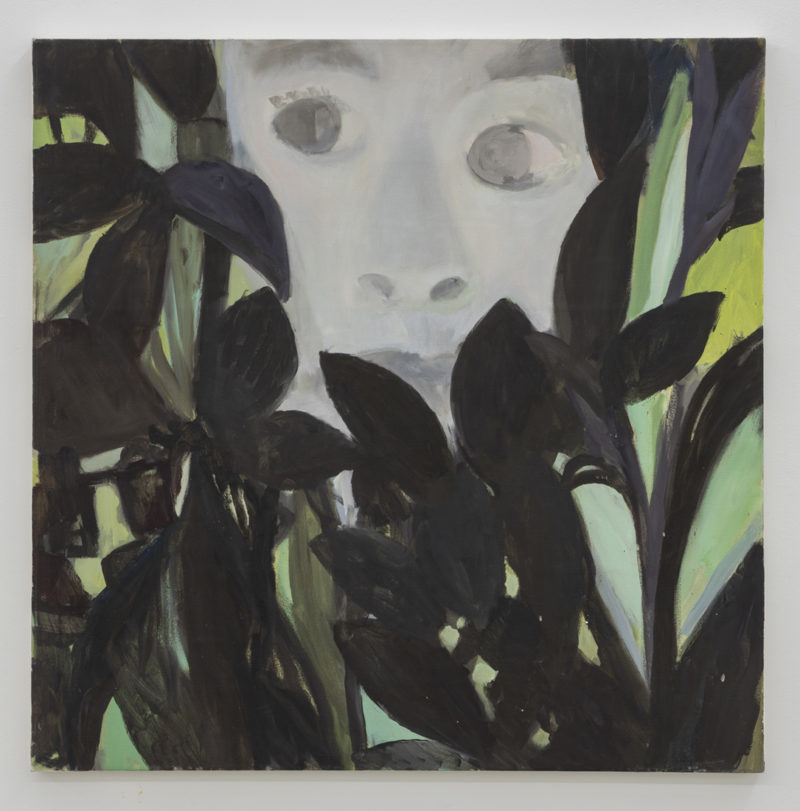Eli Langer: Paintings
11 December 2020
By Gregory Humeniuk
Dear N,
It was great to catch up with you and R in Winnipeg in February. Visiting Plug In and the WAG reminded me of how much I miss the essential pleasure of an exchange about art before art. Clint Roenisch’s Eli Langer exhibition would have been an antidote to the usual bunch of second-rate shows any time, and when Ontario’s emergency orders were still novel, Clint welcomed a private visit on a Tuesday afternoon. With everything closed, Langer’s paintings from LA around the turn of the century, through the aughts, blotted local mediocrities and lifted my spirits.
The SoCal in the show is none of the Orange County you know, the San Bernardino I know, or the SoCal shorthand we share. It’s a state of mind unique to Langer, manifest in paintings that could have been painted in a lot of places—maybe Dallas, maybe Tunis, maybe Paris. They are the eloquent residue of the frame of mind of someone between this and that, maintaining artistic integrity, on the way to another thing. It’s solid. It’s elegant.
The omission of dates in the labeling was a drag. It felt a little clever then became irrelevant. Knowing the works are from one chronological and biographical episode is all we need. The exhibition’s historical cast makes it easier to look without distractions or risk pointless projections. Tell me if I fell into that trap.
The paintings are unaffected. They don’t have a lot of paint. There’s no impasto for effect. If there’s any impasto, it’s incidental to Langer’s movements and painting. It’s not like he was painting with gouache either, he fully exploited oil paint on canvas, and mixed a lot of white into his palette. It gives everything a chalky luminosity and a superbly artificial, over-exposed quality. Untitled (figure and foliage) (2004) and RSVP (2004) have especially rich foliage while seeming sterile. Langer’s light is none of Burnett’s, Chandler’s, or early Tarantino’s. It’s more like a negative of Vuillard in the late 1890’s, all pattern, idiosyncratic rhythm, and a distinct frame of mind. As Vuillard’s Paris interiors avoid specificity, so do Langer’s. His light touch with drawing balances his painting, keeping everything agile and strong.
The trio of Large Configuration (2007), Untitled (figure and foliage), and Small Configuration (2007) stopped me: Untitled is central, its title describes it well, and the flanking Configurations have no images from our world of experience. Gradually, the facts of the abstraction and the fantasies of the renderings shuffled. The abstracted figure and foliage gave substance to the abstractions. The Configuration paintings’ images became as real as the figure in the centre of Untitled, while Untitled became more fantastic. The last time I had the unalloyed delight of moving through an imaginary space, imagining a fully conceived, alien world was in a room of magnificent 1973 Joan Miró’s.

Langer’s painterliness slowly began to glow. Wonderfully, there is nothing literary about the work, and there is no sense he is trying to awaken the people or solve a problem. He’s making art. The paintings resemble the ones he showed at Roenisch in 2015. It is hard to see Langer’s growth or direction from them to these. Yet, if the paintings weren’t so appealing, and suggestive of genuine engagement with work and craft, it would be easy to dismiss them as, “okay”. These are too good for that. The challenge is how Langer builds or vaults from them to the next thing.
The paintings are beguiling, delicate, gentle, free of affectation, free of desperation for revelation, relevance, and free of earnest reverence. Instead, they abound in enigma and subtlety. This might be a projection of my taste. Only having been introduced to Eli once or twice, I don’t know if it reflects his personality. The works have personality and seem as curious about their world as their maker was about the world he was experiencing when he made them.
Philip’s 1987 mid-career survey of Shirley Wiitasalo likely opened me to what I recognize as emotional sincerity in art. Marc’s 2000 show absolutely confirmed it. I pick it up in Jay’s, Andre’s and your work as well. The big, simple, eternal questions of life and meaning don’t make good press releases or arts spots on the CBC. I prefer to believe Langer understands art might ask the questions, maybe shines a little light, but that it will solve nothing and never functions as a social or existential answer key.
The show is Eli Langer: Paintings. The title and the paintings are directly inscrutable. Unless I’ve duped myself, Langer’s focus on minding his business of being a painter is as close to radical as one can be in Toronto. The paintings are so good, biographical details are irrelevant. That I still don’t know exactly what to make of the paintings may be their greatest feature. Langer extends his personal sovereignty. He made them. He shares some of the circumstances and there is always some obscurity.
The show is one to regret missing. It’s a drag you’re not around.
All best to you and R,
– G
Paintings ran from March 19 to May 2, 2020 at Clint Roenisch Gallery in Toronto, ON.
Feature Image: (from left to right) Bathyscape, and The Effect was Permanent by Eli Langer. Photo by Toni Hafkenscheid courtesy of Clint Roenisch Gallery.




